Friday, 23 February 2018: Lamborghini Factory and Museum
Today, we’re driving by Lamborghini near Bologna. Not to select one to buy – we’ll have to save for longer for that – but to visit the factory and the museum. We’re surprised as we get closer. The industrial zone is situated far off in a rural part of the country which doesn’t seem to have benefited from the factory. The nearby town looks really old and derelict. There are no restaurants to have lunch in, and there even isn’t any visitor parking nearby.
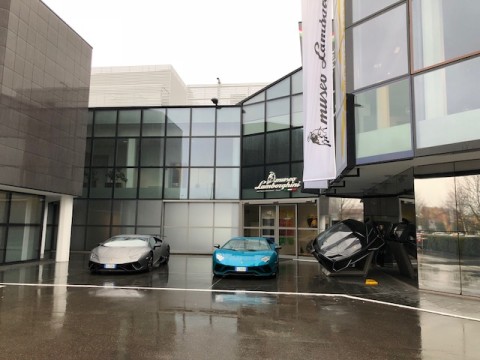
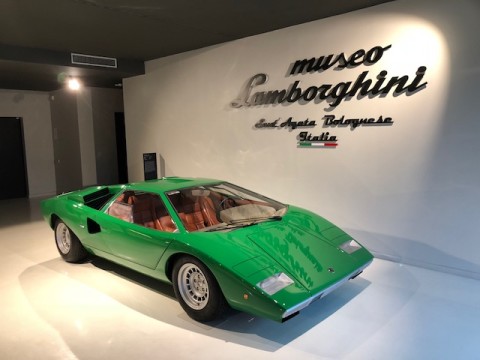
In the end, we found a place to buy a sandwich and arrive at the reception on time for the factory tour. A guide leads us through the two production lines. The first one hosts the Lamborghini Huracán where the workers build 13 cars per workday. At the 14 different stations, body parts, windows, engine, wheels and all the other parts are being added during 35 minutes per station.
The Lamborghini Aventador is being built in the second production line. Six cars are created each work day. All cars are built to order and there’s a huge mix of cars in different colours and versions, with or without roof, and with the steering wheel on the left and right side. There’s even a race car version with lighter materials at one of the stations. After being built, each car is tested indoors and also outdoors. Test drivers take each one for a 50 km spin on the roads around the factory, in all conditions. I’m not sure whether it’s really a good idea to test drive a Lamborghini with summer tyres destined for California in the cold winter weather.
In other parts of the factory, they build the huge engine (12 cylinders for the Aventador, 10 for the Huracán), sew the seats and other interiour decorations using the best leather available. It’s interesting to watch an employee check the huge hide for imperfections like moscito bites or scars.
They currently build another factory for the Lamborghini Urus with a yearly production of 1,000 vehicles.
Unfortunately, we weren’t allowed to take photos inside the factory. So we “only” have photos from the Lamborghini Museum to show, where most of the Lamborghini models – if not all versions – are on display. On the ground floor, we’re being greeted by a lovely Lamborghini Miura with its characteristic eye brows.
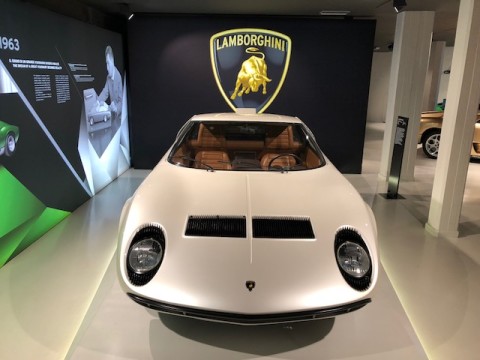
Beside, there’s a red Lamborghini 400 GT, a golden Lamborghini Diablo (after the facelift), a grey Lamborghini Espada and an orange Lamborghini Mirciélago.
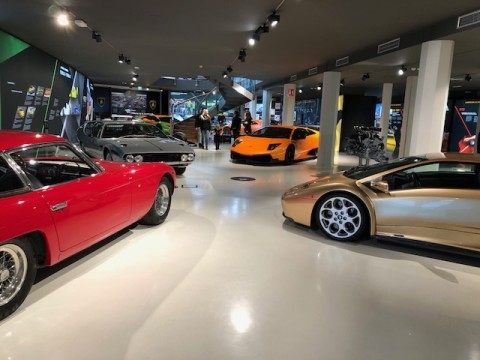
Behind the spiral stair, there’s a “normal” and a race version of the Huracán.
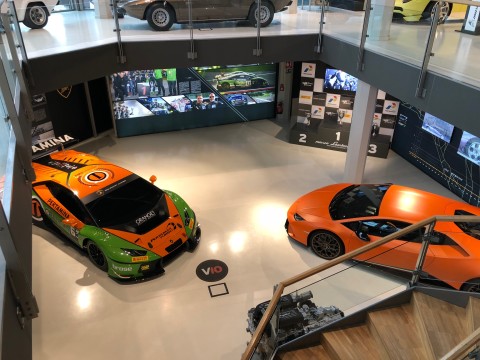
The stairs lead to an upper floor and more exciting models.
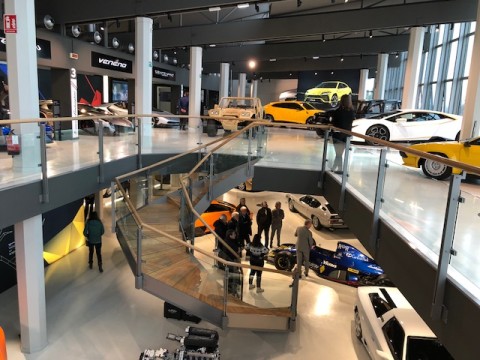
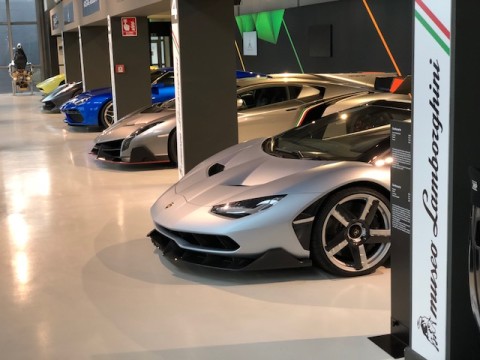
The Lamborghini Centenario was created to celebrate Lamborghini founder Ferrucchio Lamborghini’s 100th anniversary. Only 20 coupés and 20 roadsters were built, with an additional prototype each. The roadster prototype is on display here while we had seen the coupé prototype at the Geneva salon. And we saw the first Centenario delivered to the UK last year.
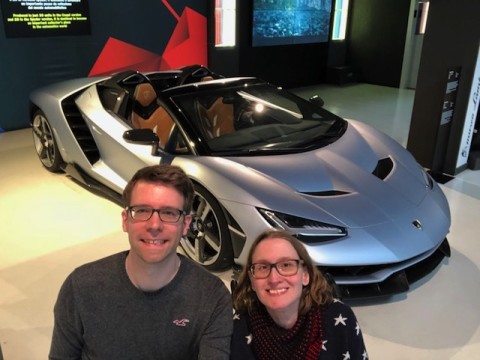
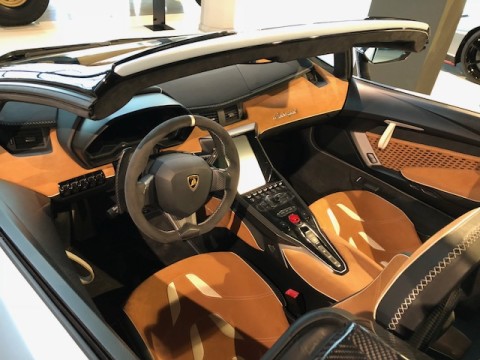
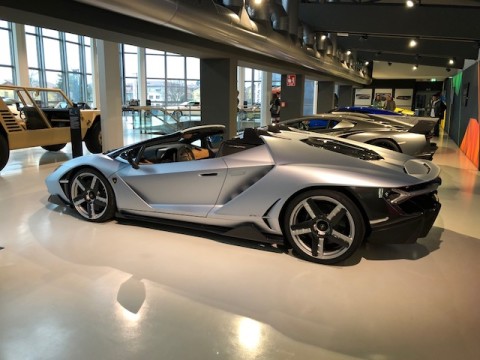
Next to it, we find the Lamborghini Veneno, another special edition, this time for the 50th anniversary of the Lamborghini brand, with only 3 models built (and 9 roadsters). Like the Centenario, it is also based on the Aventador.
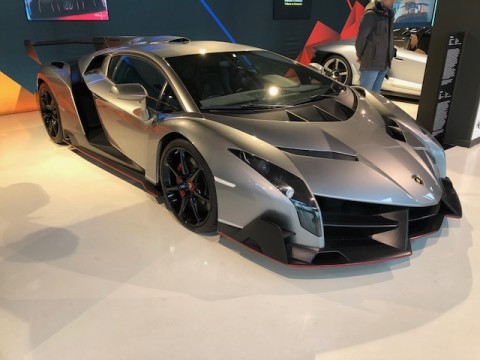
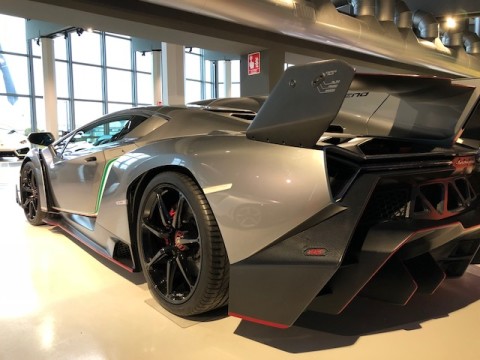
Then, there’s the Lamborghini Asterion, a 2014 concept car that also contains an electrical engine (hybrid). It never made it into production but some of its elements may be found in later Lamborghinis. The tail-light stripe for example, in the Veneno and the Centenario, or – at least I think so – some elements of its front in the Urus.
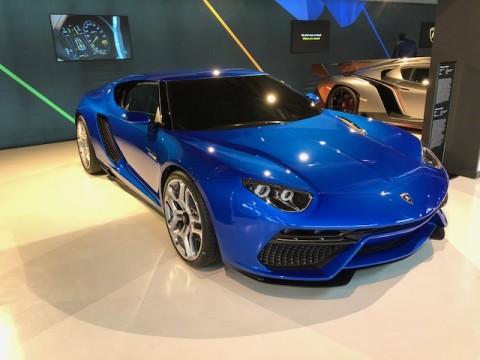
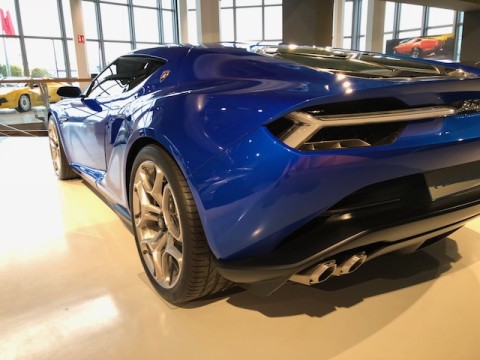
Next to it, there’s the Lamborghini Sesto Elemento, another special car limited to 20 cars. It’s based on the Lamborghini Gallardo and not street legal. It’s so low that it becomes obvious that it can only be driven on race tracks.
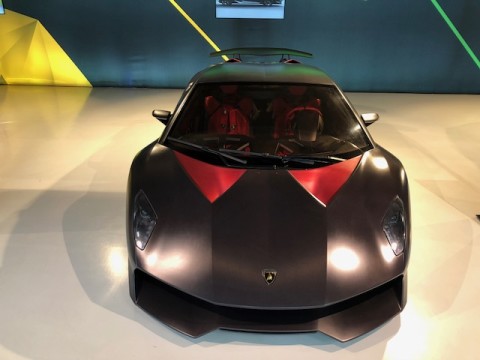
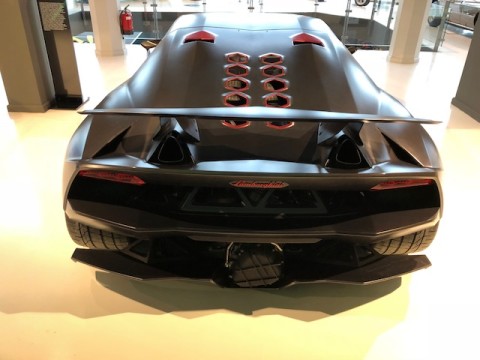
Last but not least in this row, we find the Lamborghini Miura concept which I quite like. It’s a pity it never made it into production.
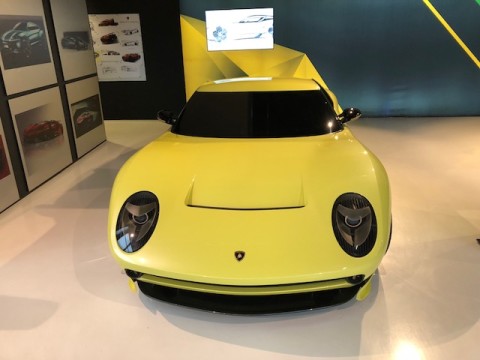
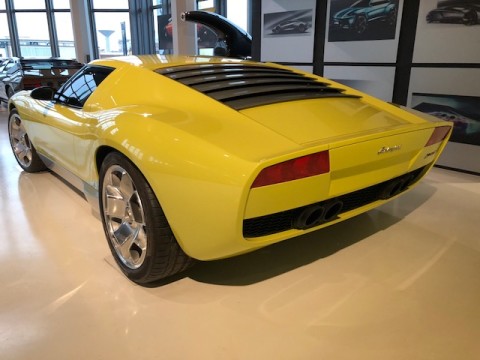
Then, there’s a Lamborghini Urraco and a Lamborghini Jalpa from the late 70s / early 80s on display.
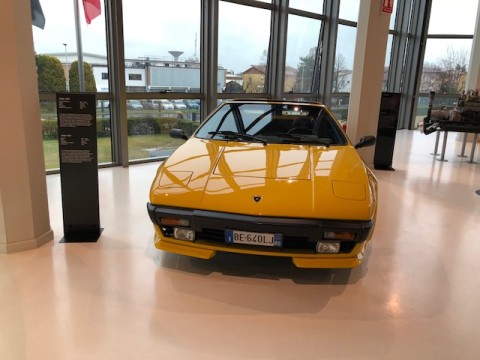
There’s also a white Lamborghini Huracán with golden decorations and signed by Pope Francis, It awaits being auctioned off for charity on 12 May 2018.
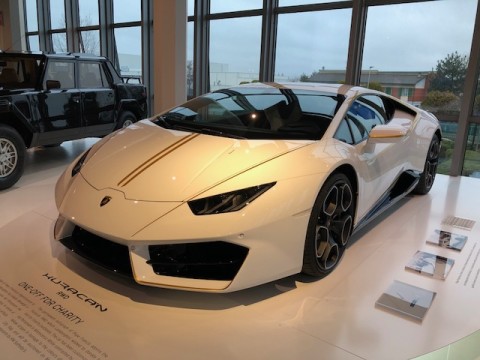
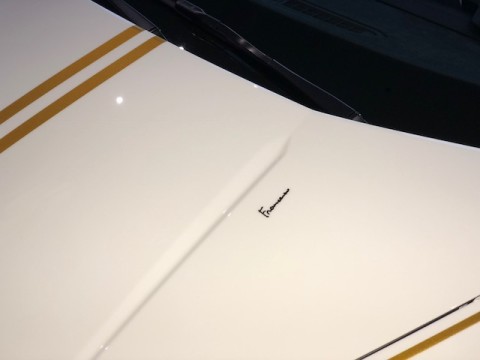
We also see Lamborghini’s first attempt for an off-road vehicle. The Cheetah was intended for the US army which in the end opted for the Humvee (which was inspired by the Cheetah, with a very similarly looking body).
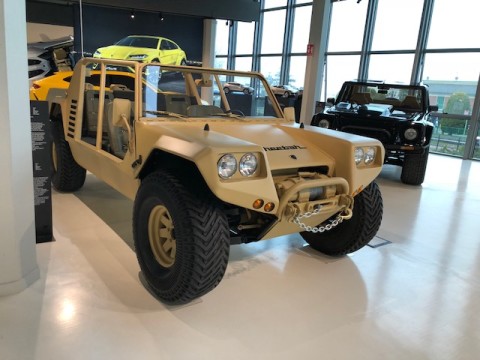
Lamborghini still produced an off-road vehicle based on the Cheetah, the LM002. 300 of them were built.
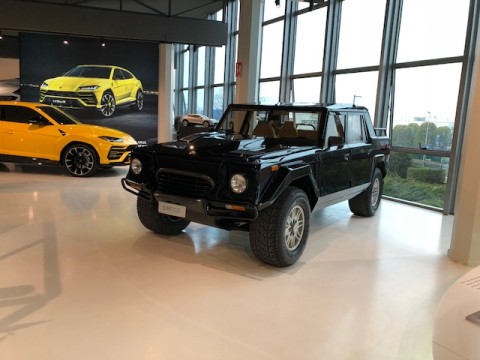
The Lamborghini Urus is Lamborghini’s latest model, an SUV with a projected yearly production of 1,000 cars. This two-faced one is just a display model while we see a real one from afar on the parking lot. Production hasn’t started yet.
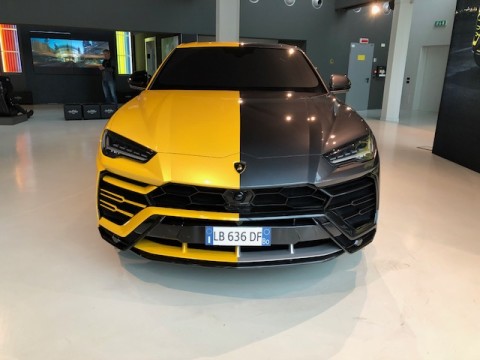
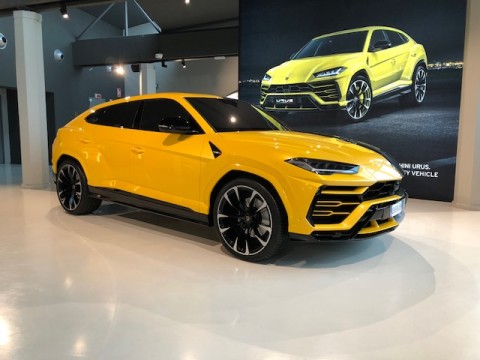
After admiring all these fast cars, we slowly drive back to the hotel while it rains sleet.
We arrive back in Trezzo sull’Adda late and head to the supermarket to get something to eat.


